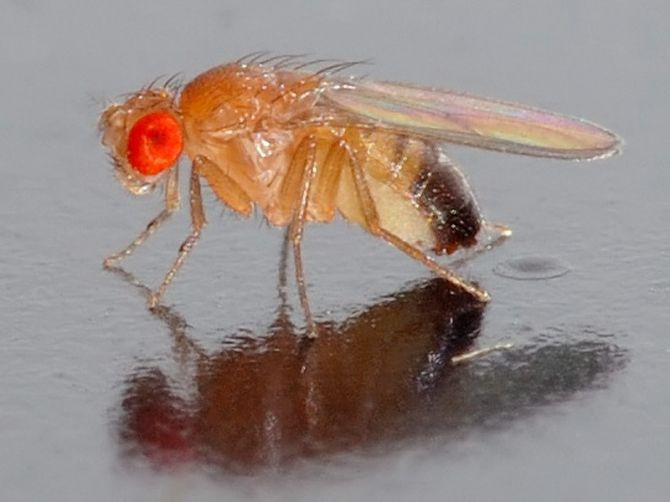Most Fruit Flies on Meth Quickly Die of Anorexia but Sugar Prolongs Life

Most fruit flies on methamphetamine die of starvation, according to a new study that shows how using meth severely disrupts metabolism and behavior and can lead to death by anorexia.
Like humans, fruit flies (Drosophila melanogaster) addicted to methamphetamine increase their physical activity and drastically cut down on eating, researchers revealed.
Methamphetamine is a strong stimulant that triggers a surge of dopamine in the brain and produces feelings of euphoria in users. Researchers said that fruit flies are a good model for studying the effects of the drug on humans because of the similar toxicological effects. In users, meth kills brain cells, packs the body with toxins and weakens the heart, muscles and bones.
Past studies found that adding glucose or other metabolic precursors in the diet of fruit flies slowed the damaging effects of exposure to methamphetamine, suggesting that the drug has a tremendously negative effect on metabolism.
Researchers pointed out that people addicted to methamphetamine are known to crave sugary drinks, indicating that their sugar metabolism is also altered by the drug.
"Previous research has not spelled out exactly how methamphetamine use affects energy metabolism," lead researcher University of Illinois entomology professor Barry Pittendrigh said in a statement. "Either it alters the expression of metabolic genes and/or the function of proteins, or it changes behaviors related to feeding and activity."
Researchers tested both hypotheses by monitoring the fruit flies energy reserves and other metabolism byproducts in response to meth exposure with and without the adding dietary glucose and tracked how the drug affected the feeding behavior, activity levels and respiration rates of flies.
Results from the study, published in The Journal of Toxicological Sciences, showed that methamphetamine use doubled the flies' movement and cut their food consumption by 60 to 80 percent.
They also found that flies' levels of triglycerides and glycogen, molecules that function energy reserves in animals, decreased steadily with methamphetamine exposure over a 48-hour period.
"This is very similar to what has been observed in humans for whom amphetamines can cause increased physical activity and decreased appetite," Walters said.
Essentially, the flies were starving because the drug was making them burn more calories than they were consuming, and even though their energy reserves were being burned up, the insects' metabolism rates actually declined with meth use.
"While methamphetamine exposure has a lot of other toxic effects that also undermine an animal's health, we show that meth exposure leads to anorexia and the resulting caloric deficit exhausts the animal's metabolic reserves," Walters said. "This is likely a primary factor in meth-induced mortality."
However, scientists found that adding sugar to the flies' diet slowed their rate of decline and death. While researchers cannot conclude why sugar prolonged life in meth-addicted flies, they hypothesize that it could be because sugar replenishes the insects' dwindling energy reserves or that sugar lessens the toxicity of meth.
Published by Medicaldaily.com



























